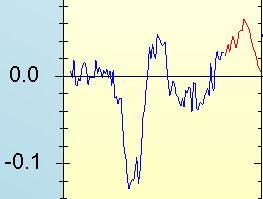The performance across sectors is uneven, with particularly strong growth in manufacturing and in distribution. Manufacturing grew by 1.3% over the quarter, and by 3.5% over the year. This is clearly good news in that it addresses concerns that the UK had, before the recession, become over-reliant on services. Strong growth in manufacturing helps raises incomes, but with developments in technology making this sector increasingly capital-intensive, the progress of the sector may not be reflected in such strong employment growth. The extent to which this concern is well founded will require monitoring as the recovery progresses. The strength of recovery in the distribution sector (which includes, amongst other things, retail and wholesale industries) reinforces the extent to which this has, at least until very recently, been a recovery led by consumer spending. Recent forecasts from, amongst others, the EY ITEM group, suggest that investment is set to rise significantly this year. If it does - and there is still surely a question mark surrounding their precise forecasts - then that will strengthen the underpinnings of a recovery that has, till now, been built on rather fragile foundations.
Other metrics of the recovery, including house price changes, suggest that experience across the regions is very patchy. Data on output growth by region are produced with long lags and are not considered to be terribly reliable, but the evidence that this recovery is spatially uneven suggests that the very encouraging aggregate statistics may serve to conceal what is, in reality, a much more nuanced picture. The data on underemployment released by the Work Foundation likewise suggest that the impact of output growth on the labour market is very different to – and less comforting than - what we have experienced in the past.
Nevertheless these most recent data offer much hope that the economy is indeed recovering.

